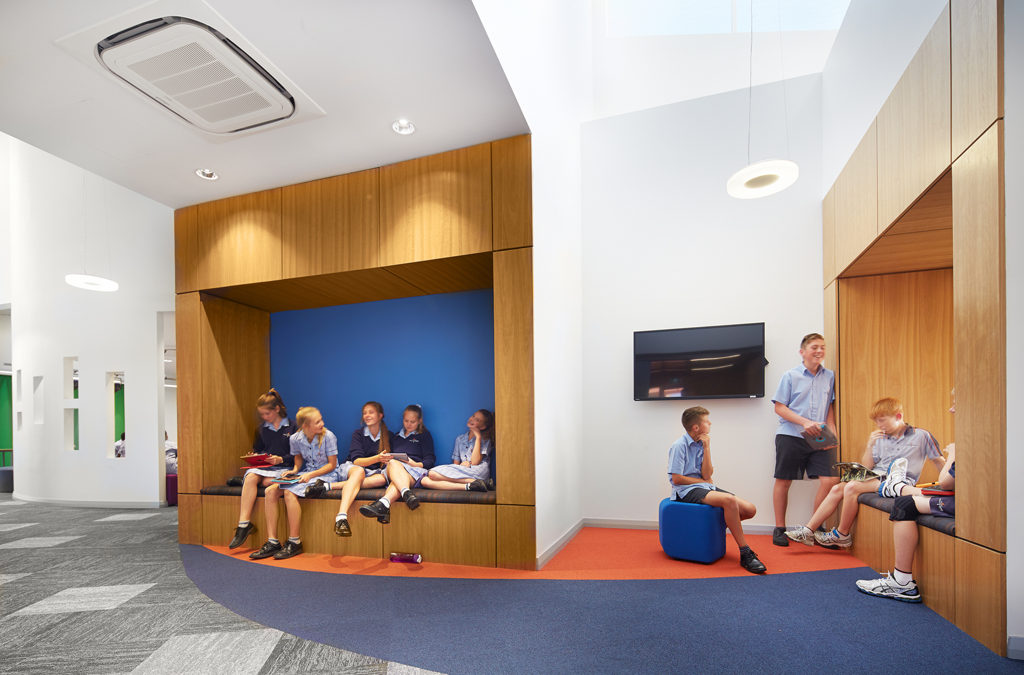Understanding activity-based learning is significant for creating the appropriate social environment; however, in conjunction with this knowledge, the physical environment must be well-thought-out to support the transactions that are intended to take place.
Defining Activity Based Learning
Building on the concepts regarding the learner, learning, the things to be learned and the learning environment, activity-based learning occurs when:
- Knowledge is mutually constructed with others;
- Learning is collaborative and co-constructed between the learner and his or her socialenvironment;
- Motivation results from negotiations with others and from the socio-historical resources available in the physical environment that supports both the collective & individual development;
- Activities are authentic and are planned to engage learners so that they will work with a variety of materials and share with others as they develop meaningful ideas and identities of themselves;
- Peers (the other learners who are part of the social environment) contribute to knowledge construction by sharing definitions as well as identifying the affordances within the tasks-at- hand; and
- The teacher is viewed as a mediator, facilitator, coach, mentor, and actuator who participates with the less experienced learners co-constructing knowledge
What is an Activity-Based Environment?
Understanding activity-based learning is significant for creating the appropriate social environment; however, in conjunction with this knowledge, the physical environment must be well-thought-out to support the transactions that are intended to take place. Building on Lave and Wenger’s Situated Learning: Legitimate peripheral participation(1991), situated learning theory provides insight to how the physical environment may be created to afford optimal learning experiences.
Situated Learning Theory
Situated learning theory which extends Dewey’s theory stresses the importance of where, when, and how opportunities take place for learners (Brown, Collins, & Duguid, 1989; Greeno, Collins & Resnick, 1996; Putnam & Borko, 2000). Furthermore, this perspective recognizes that authentic experiences created for the learner is a direct result from planning and structuring the activities within the learning environment (Brown et al.,1999). According to Putnam and Borko (2000), situated learning theory has a few fundamental themes regarding cognition. These themes value that:
- cognition is situated in physical and social contexts. Situated learning relies on authentic activities to encourage cognitive development.
- cognitive development is a social process. Social cognition involves transactions with others in the social environment. These transactions are a factor in how cognition develops and what kinds of skills are acquired.
- cognitive development occurs as a result of the shared negotiations and shared cognitions with others in the physical environment.
Considerations for Creating Activity-Based Learning Environments
The concepts that validate situated learning theory must be extended to the design profession; for, situated learning theory provides the foundations for creating activity-based learning environments. The reason for this is that it emphasizes the significance of authentic learning experiences and acknowledges that these experiences occur at specific times within a specific place. Even with this knowledge, the research on the spatial design of the school building is typically limited to acoustics, crowding, along with environmental, availability of choice, color, naturalness, and lighting in classroom spaces. The research on acoustical conditions and background noise in the classroom indicates an impact on learning; for, chronic levels of ambient noise can be associated with stress response. Furthermore, poor acoustical conditions have been found to reduce learning comprehension and speech recognition in children (Valente, Plevinsky, Franco, Heinrichs-Graham, and Lewis, 2010).
The concepts that validate situated learning theory must be extended to the design profession; for, situated learning theory provides the foundations for creating activity-based learning environments. The reason for this is that it emphasizes the significance of authentic learning experiences and acknowledges that these experiences occur at specific times within a specific place. Even with this knowledge, the research on the spatial design of the school building is typically limited to acoustics, crowding, along with environmental, availability of choice, color, naturalness, and lighting in classroom spaces. The research on acoustical conditions and background noise in the classroom indicates an impact on learning; for, chronic levels of ambient noise can be associated with stress response. Furthermore, poor acoustical conditions have been found to reduce learning comprehension and speech recognition in children (Valente, Plevinsky, Franco, Heinrichs-Graham, and Lewis, 2010).
Creating Activity Based Learning Environments (CABLEs)
Teasing out what has been gathered from the theory and research on learning environments reveals that:
- Learners acquire knowledge from their authentic interactions in real-life situations;
- The learner is influenced and shaped by their social environmental systems;
- The learning environment is composed of a social environment of learners with diverse experiences;
- To create authentic experiences, the physical environment must be organized with a variety of activity settings that encourage desired transactions to take place; and
- The learner and the physical environment must be viewed as active.
This framework from these research perspectives provided the structure for creating activity-based learning environments for Skapaskolan in Huddinge, Sweden and Holy Cross College in Perth, Australia.
Skapaskolan, Huddinge, Sweden
Since 2013, I have been working with Skapaskolan. Initially, I was invited to present and to conduct workshops with the school community. These workshops focused on my book, Evidence Based Design for Elementary and Secondary School: A Responsive Approach for Creating Learning Environments (2010) and on educational facilities from around the world. The purpose of the workshops was to provide:
- The learning community at Skapaskolan, who are planning to design a new school building, with ideas of how to create a facility grounded in educational, developmental and environmental theory and research on learning environments.
- Alternative solutions for how an activity-based learning environment might be crafted.
The school began operation in the fall of 2013. Currently, the school operates out of three portable two- story classroom buildings, with two rooms on the lower floors with two rooms on the upper floors. In the spring of 2014, Skapskolan engaged me to design an amphitheater for their third and fourth grade classroom space. The reason for this was that two educators were team teaching on the ground floor of the modular classroom buildings and wanted to maintain an open space, but realized that they needed to have their spaces better defined. We thought that a tiered seating area in the space would support their pedagogy and better define various learning zones/activity settings in the classroom.
The outcome is a design solution that is an open space which is flexible, allows for transactions to flow seamlessly across settings and where transitions between settings and technologies are fluid. Effectively, this design solution provides:
- A centrally defined meeting place where two classes can meet at any one time.
- A place in which learners can work simultaneously at any time during the day in small working groups or independently.
- The creation of a variety of activity settings around the amphitheatre where learners are able to acquire knowledge.
Building on the success of this setting, other teachers desired to have similar open learning environments. When the school commenced in 2013, rather than introduce the same furniture and equipment into all the classrooms, the Skapaskolan educators embraced my ideas for having a variety different tables, chairs, stools, and ottomans in the rooms. The reasoning behind this approach was to find out what worked and what didn’t work for their pedagogical approach. From their experiences with the furniture, they would have the insight and be able to thoughtfully inform the designers about what they believed to be appropriate for their new facility.
This approach has been successful; for, the teachers and students can easily explain why they preferred or disliked certain chairs, stools and tables. On the one hand, this approach made the learning communityaware of what was working and what wasn’t working; nevertheless, the variety of furniture also was problematic. Because each room had different furniture, the teachers had few cues to draw from when they went between the rooms. Hence, they had greater difficulty transforming their rooms into activity- based learning environments.
After workshops I conducted in October 2014 and March 2015, various teachers asked me to look at their rooms and help them make them less static and more dynamic. The arrangement of the furniture and equipment in their rooms limited them and their students’ capacity to work in smaller social groupings. I began by talking with the teachers and watching how they worked. Essentially, I wanted to understand the activities that took place. Based on the interviews and observations, I was able to re-organize the furniture and equipment in the rooms to create spaces where the class can meet in a large group and in small cooperative groups. Additionally, more private areas were created for those students who liked to work individually.
Another positive outcome from the amphitheatre and rearranging the furniture and equipment in various classrooms has been twofold. Not only do these settings afford the when, what, and where an activity can be achieved, these rooms have been choreographed to create the spaces/learning zones in between where learners can choose to be peripherally engaged in an activity as well as determine if they want to enter into the activity setting for guidance from another student or choose to move into the activity setting and become full engaged in the task at hand.
This article was first published at: holtthink.tumblr.com/post/125094379215/looking-inside-out-creating-activity-based


Recent Comments